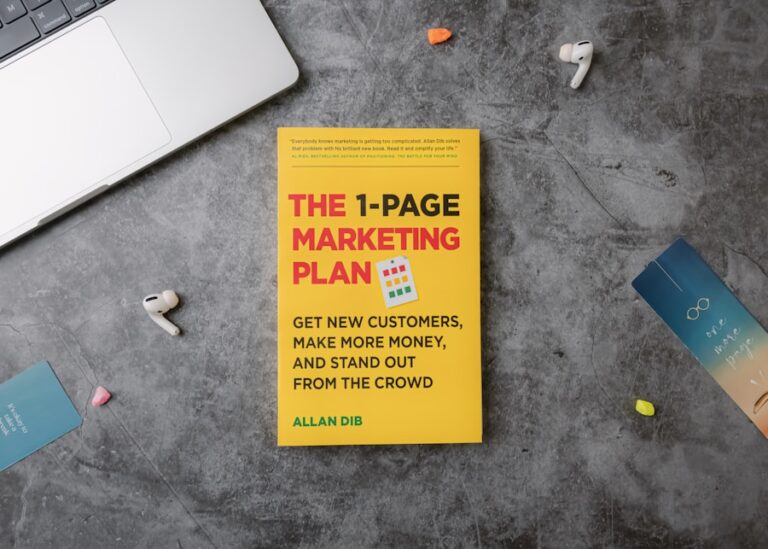Pricing is not just a matter of setting a number; it is a complex psychological game that can significantly impact consumer behavior. Understanding the psychology of pricing is crucial for businesses to effectively attract and retain customers. One of the key principles in pricing psychology is the concept of perceived value. Consumers are more likely to make a purchase if they believe they are getting a good deal or if they perceive the product or service to be of high value. This is why many businesses use tactics such as setting a higher original price and then offering a discount, as it creates the perception of a bargain. Additionally, the way prices are presented can also influence consumer behavior. For example, using odd pricing (such as $9.99 instead of $10) can make a product seem more affordable and appealing. Furthermore, anchoring, which involves presenting a high-priced option first before offering a lower-priced option, can make the lower price seem more reasonable in comparison.
Another important aspect of pricing psychology is the impact of emotions on purchasing decisions. Emotions play a significant role in how consumers perceive prices and make buying decisions. For example, consumers may be willing to pay more for a product if they feel a strong emotional connection to it, such as associating it with positive experiences or memories. Additionally, the way prices are communicated can evoke different emotional responses. For instance, using words like “sale” or “limited time offer” can create a sense of urgency and excitement, prompting consumers to make a purchase. Understanding these psychological factors can help businesses set prices that resonate with consumers and drive sales.
Utilizing Data to Determine Optimal Pricing
In today’s digital age, businesses have access to an abundance of data that can be leveraged to determine optimal pricing strategies. By analyzing customer behavior, market trends, and competitive pricing, businesses can gain valuable insights into how to price their products or services effectively. One approach is to use pricing analytics to track customer purchasing patterns and identify price sensitivity. By understanding how customers respond to different price points, businesses can adjust their pricing strategies to maximize revenue and profitability. Additionally, businesses can use data to conduct A/B testing, where different pricing strategies are tested on a small scale to see which one yields the best results.
Furthermore, businesses can utilize dynamic pricing tools that automatically adjust prices based on real-time market conditions, demand, and other factors. This allows businesses to stay competitive and responsive to changes in the market, ultimately maximizing revenue. Moreover, data can also be used to segment customers based on their willingness to pay, allowing businesses to offer personalized pricing and promotions to different customer segments. By leveraging data-driven insights, businesses can make informed pricing decisions that align with customer preferences and market dynamics.
Implementing Dynamic Pricing Strategies
Dynamic pricing is a strategy that involves adjusting prices in real-time based on various factors such as demand, competition, and market conditions. This approach allows businesses to optimize prices for maximum profitability and responsiveness to changes in the market. One common application of dynamic pricing is in the airline industry, where ticket prices fluctuate based on factors such as seat availability and booking patterns. By implementing dynamic pricing strategies, businesses can capture additional revenue during peak demand periods while also attracting price-sensitive customers during off-peak times.
Another example of dynamic pricing is in the e-commerce industry, where online retailers use algorithms to adjust prices based on factors such as customer browsing behavior, competitor pricing, and inventory levels. This allows businesses to stay competitive and maximize revenue by offering the right price at the right time. Additionally, dynamic pricing can be used in the hospitality industry, where hotels adjust room rates based on factors such as occupancy levels and local events. By implementing dynamic pricing strategies, businesses can adapt to changing market conditions and consumer behavior, ultimately driving sales and profitability.
Leveraging Bundling and Cross-Selling Techniques
Bundling and cross-selling are effective techniques for maximizing sales and revenue by offering complementary products or services together at a discounted price. Bundling involves packaging multiple products or services together for a single price, while cross-selling involves promoting related products or services to customers who have already made a purchase. These techniques not only increase the perceived value for customers but also encourage them to spend more than they originally intended.
For example, software companies often offer bundles that include multiple programs or features at a discounted price compared to purchasing each item separately. This not only increases the value proposition for customers but also drives higher sales volume for the business. Similarly, e-commerce retailers often use cross-selling techniques by suggesting related products to customers based on their browsing or purchase history. By leveraging bundling and cross-selling techniques, businesses can increase average order value and customer satisfaction while driving overall sales.
Another effective approach is to offer tiered pricing options that cater to different customer needs and budgets. For example, subscription-based services often offer multiple tiers with varying features and price points to appeal to different customer segments. This allows businesses to capture a wider range of customers while maximizing revenue through tailored pricing options.
The Role of Discounts and Promotions in Driving Sales
Discounts and promotions play a crucial role in driving sales and attracting customers. Whether it’s a limited-time offer, a buy-one-get-one-free deal, or a percentage discount, these tactics can create a sense of urgency and excitement that motivates consumers to make a purchase. One common approach is to offer discounts on slow-moving or seasonal products to clear inventory and generate cash flow. This not only helps businesses move stagnant inventory but also creates opportunities to upsell or cross-sell other products.
Moreover, discounts and promotions can be used strategically to attract new customers and retain existing ones. For example, offering a first-time buyer discount or a loyalty program can incentivize customers to make a purchase and keep coming back for more. Additionally, businesses can leverage seasonal promotions such as holiday sales or back-to-school discounts to capitalize on consumer spending trends.
Furthermore, businesses can use targeted promotions based on customer behavior and preferences. For instance, sending personalized discount offers to customers who have abandoned their shopping carts or offering exclusive promotions to high-value customers can drive sales and foster customer loyalty. By strategically using discounts and promotions, businesses can create compelling incentives for customers to make a purchase while maximizing revenue.
Monitoring and Adjusting Pricing for Maximum Impact
Once pricing strategies are implemented, it’s crucial for businesses to continuously monitor and adjust their pricing for maximum impact. This involves tracking key performance indicators such as sales volume, revenue, profit margins, and customer feedback to evaluate the effectiveness of pricing strategies. By analyzing these metrics, businesses can identify areas for improvement and make data-driven adjustments to optimize their pricing.
One approach is to conduct regular price sensitivity analysis to understand how changes in price impact customer behavior and sales performance. By testing different price points and observing customer responses, businesses can fine-tune their pricing strategies for maximum impact. Additionally, businesses can use pricing optimization tools that leverage machine learning algorithms to analyze large datasets and recommend optimal pricing strategies based on market dynamics and customer behavior.
Moreover, businesses should stay informed about market trends, competitor pricing, and consumer preferences to stay competitive and responsive in their pricing strategies. By staying agile and adaptable, businesses can proactively adjust their pricing in response to changes in the market landscape while maintaining profitability.
Case Studies: Successful Examples of Smart Book Pricing
One successful example of smart book pricing is Amazon’s dynamic pricing strategy for e-books. Amazon uses algorithms that adjust e-book prices based on factors such as demand, competitor pricing, and customer browsing behavior. This allows Amazon to offer competitive prices while maximizing revenue from e-book sales.
Another example is the success of bundle pricing by publishing companies such as Penguin Random House. By bundling multiple books from the same author or genre together at a discounted price, these companies have been able to increase sales volume while providing added value for customers.
Furthermore, the use of targeted promotions by Barnes & Noble has been effective in driving sales of physical books. By offering personalized discounts based on customer purchase history or preferences, Barnes & Noble has been able to incentivize customers to make purchases while fostering loyalty.
In conclusion, understanding the psychology of pricing is essential for businesses to effectively attract and retain customers. By leveraging data-driven insights and implementing dynamic pricing strategies, businesses can optimize their pricing for maximum impact while leveraging bundling and cross-selling techniques to drive sales and revenue. Additionally, discounts and promotions play a crucial role in attracting customers and driving sales while monitoring and adjusting pricing is crucial for maintaining competitiveness in the market landscape. Successful examples of smart book pricing from companies such as Amazon, Penguin Random House, and Barnes & Noble demonstrate the effectiveness of these strategies in driving sales and profitability in the publishing industry.




